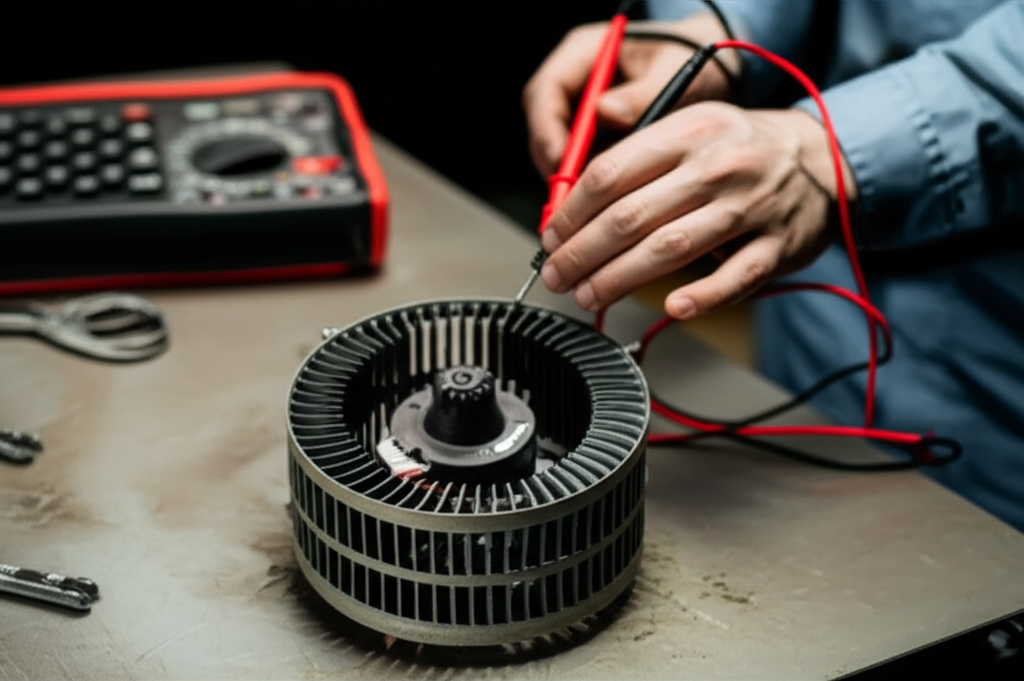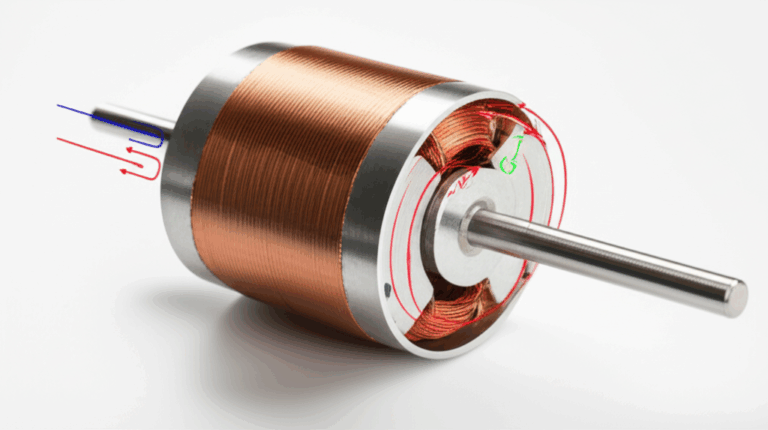
How to Test a Blower Motor (Car or HVAC): A Step-by-Step DIY Diagnostic Guide
Table of Contents
- Introduction: Why Your Blower Motor Might Be Failing
- Before You Test: Safety and Quick Checks that Save Time
- Tools I Use for Blower Motor Troubleshooting
- Step-by-Step: Automotive Blower Motor Testing
- Step-by-Step: HVAC (Furnace/AC) Blower Motor Testing
- Interpreting Your Test Results
- What Causes Blower Motor Failure and How to Prevent It
- Repair or Replace: How I Decide
- Cost, Time, and When I Call a Pro
- Conclusion: Recap and Confidence Boost
Introduction: Why Your Blower Motor Might Be Failing
I still remember the first time my car’s climate control went silent on a hot day. The fan speed showed “3”, the AC light glowed like everything was fine, yet the cabin felt like a sauna. That was my crash course in blower motor troubleshooting. Since then I have tested dozens of blower motors in cars and home HVAC systems. The pattern stays the same. Start simple, test smart, and fix the real problem. Not the guessed one.
Why does testing matter? Because a blower motor can act dead while the real culprit hides upstream. I have seen blown fuses, a stubborn blower motor resistor pack, a crusty relay, or a weak capacitor on a furnace mimic a bad motor. I have also seen seized bearings and burnt windings that leave no choice but replacement. Testing protects your wallet. It also protects your time.
Common blower motor symptoms I watch for:
- No air at any speed
- Weak airflow or airflow that fades
- Fan only works on high or only on one speed
- Unusual noises like squealing, grinding, or a loud hum
- Intermittent operation that comes and goes
- Constant blower motor operation even when you switch it off
If you are wondering why your car AC fan will not work or why your furnace fan is not spinning, this guide will walk you through a safe, clear testing process. I will show you how I check voltage, ground, continuity, resistance, and capacitors. I will explain how to bench test a 12V automotive motor and how to test a 120V or 240V HVAC blower motor. You will see where blower motor resistor failures hide and when an ECM variable speed motor needs more advanced diagnostics.
Before You Test: Safety and Quick Checks that Save Time
I never start with a multimeter. I always start with safety and simple stuff. That habit has saved me money and it has saved a few fuses.
Safety first:
- Disconnect power on HVAC systems at the main breaker or service switch
- Pull the key out or switch the ignition off in a car before unplugging connectors
- Wear safety glasses and electrical gloves when you open panels
- Keep your fingers and clothing away from the squirrel cage fan or impeller
- Respect capacitors. They hold a charge after you cut power
Quick checks I always do before diving deeper:
- Check the blower motor fuse in cars
- Check furnace or air handler breakers and the service switch
- Replace blown fuses only after you find the cause
- Listen for a click when you switch the fan on
- Swap with a known good relay of the same type if possible
- Inspect the wiring harness and electrical connector for heat damage, melted plastic, corrosion, or a loose fit
- Tug gently on wires and look for breaks near the connector
- Check the cabin air filter in cars
- Check the furnace air filter in HVAC systems
- A clogged air filter strangles airflow, overheats the motor, and mimics blower motor failure
- Look for leaves, dust, or debris in the blower housing
- I have pulled a pen and a shop rag out of a blower housing. No test will fix that until you remove it
When simple checks do not reveal the issue I move to electrical testing.
Tools I Use for Blower Motor Troubleshooting
You do not need a lab. A basic kit does the job.
- Digital multimeter with voltage, ohms, continuity, and capacitance modes
- Test light for quick power checks on 12V systems
- Jumper wires with alligator clips for bench testing
- Screwdriver set and socket wrench set
- Wire strippers and electrical tape
- Safety glasses and electrical gloves
- Vehicle manual or HVAC service manual with a wiring diagram or schematic
- A known good 12V power source for car motor bench tests
- Pen and paper or your phone for notes on readings
If you are new to a multimeter learn the basics first. Practice setting it to Volts DC for cars and Volts AC for household HVAC. Practice checking continuity and resistance in ohms. You will use these constantly.
Step-by-Step: Automotive Blower Motor Testing
I will use a typical car or truck as the example. Ford F-150, Honda Civic, Toyota Camry, Chevy Silverado. The layout changes yet the process stays similar.
1) Access the blower motor
In most cars the blower motor hides under the dashboard on the passenger side or in the passenger footwell. Remove the lower trim panel and the glove box if needed. You will see a round motor with a plastic squirrel cage fan bolted to the HVAC housing.
2) Visual inspection
I look for:
- Burnt smell or melted plastic near the connector
- Debris in the fan cage
- A seized fan that will not spin by hand
- Water intrusion or signs of a leak from the evaporator core or heater core
A motor that will not budge by hand probably has seized bearings or a damaged armature. That often points to replacement.
3) Power and ground test at the connector
This test tells me if the motor is getting power and ground.
- Turn the ignition on
- Set the fan to high on the HVAC control panel
- Disconnect the blower motor electrical connector
- Set the multimeter to Volts DC
- Probe the power wire to chassis ground. Expect around 12V on high
- Probe the ground wire to chassis ground with continuity mode or ohms to verify a good ground
If I have 12V on the power wire and a solid ground yet the motor does not spin, the motor is likely bad. If I have no power the fault sits upstream. That could be a fuse, relay, blower motor resistor, control module, switch, or wiring.
Tip: Some vehicles use a blower motor control module instead of a simple resistor pack. Variable speed systems may modulate the ground side or the power side. That is why the wiring diagram helps.
4) Blower motor resistor or control module test
Symptoms of a bad resistor pack:
- The fan works only on one speed
- The fan works on high only
I do this:
- With the connector plugged in, back probe the output side of the resistor or control module at each speed
- You should see voltage change across speeds
- If power does not reach the motor on lower speeds yet does on high, the resistor is suspect
- With the power off remove the resistor pack and test for continuity or specific resistance values between terminals
- If it reads open or wildly out of spec, replace it
A failed blower motor can also kill the resistor because an overworked or seizing motor draws too much current. I check both parts when one fails.
5) Bench test the blower motor (direct power test)
I use this when I am unsure about the motor itself.
- Remove the blower motor from the car
- Secure it on a bench so it does not roll
- Use jumper wires to apply 12V directly from a vehicle battery or a power supply to the motor’s power and ground terminals
- The motor should spin smoothly and quietly with strong airflow
- A motor that hums, stalls, or spins weakly fails this test
If the motor passes a direct power test yet fails in the car, I chase upstream issues like the relay, resistor, control module, or wiring. I also check for a bad ground.
Optional checks I sometimes add
- Current draw test: Use a clamp meter to measure amperage on the power wire at high speed. Compare to a service manual spec. A motor drawing too much current points to worn brushes or bearings. A motor drawing too little could have an open winding or internal damage.
- Voltage drop test: Measure voltage between the battery positive and the motor positive while the fan runs. Then measure between motor ground and battery negative. A large drop means wiring or connector resistance.
- DTC scan: Some vehicles log HVAC-related diagnostic trouble codes. Not common for simple blower circuits but worth a quick check if the car supports it.
Quick note on motor design
Automotive blower motors are usually brushed DC motors. They rely on motor brushes, bearings, an armature, and a stator or permanent magnet structure. The quality of the stator, rotor, and laminations affects efficiency and heat. If you are curious about the materials inside, the stator core lamination and rotor core lamination stack reduces eddy currents and losses. That matters more in design than in basic testing. It still helps you understand why a motor overheats if airflow drops or current climbs.
Step-by-Step: HVAC (Furnace/AC) Blower Motor Testing
Household systems run on 120V or 240V AC which can injure you. I never touch a wire until I flip the main breaker off. I also discharge capacitors before I test them.
1) Power off then access the blower motor
- Switch the furnace or air handler power off at the breaker and service switch
- Remove the access panels
- Find the blower housing and the blower motor inside the air handler
- Inspect dust and debris around the blower wheel. Clean as needed
2) Visual inspection
I look for:
- Burnt wiring, melted connectors, or scorched insulation
- A seized blower wheel or shaft
- Dirt packed on the motor and wheel that can unbalance the assembly
- Oil or rust that signals bearing failure
- A swollen or leaking capacitor on PSC motors
3) Power supply test at the motor (with caution)
- Reconnect power briefly for this test
- Set the thermostat to Fan On or call for Heat or Cool to request blower operation
- Set the multimeter to Volts AC
- Test for 120V or 240V at the motor terminals depending on your system
- If you see proper voltage but the motor does not run, that points to a failed motor or capacitor on PSC systems
- Cut the power off immediately after the check
4) Continuity and resistance tests on windings (power off)
- Disconnect power and verify zero volts
- Label and remove the motor wires
- Set the multimeter to ohms
- Test resistance between the common wire and each speed tap on PSC multi-speed motors
- Compare to the service manual or typical ranges. Higher speed taps often show lower resistance
- Test between any motor lead and the motor case. You should read open. Continuity there indicates a short to ground
No continuity on a winding means an open circuit which condemns the motor.
5) Capacitor testing on PSC motors
- Discharge the capacitor safely using a resistor across the terminals
- Set the multimeter to capacitance in microfarads
- Compare your reading to the capacitor label. If it says 10 µF ±6% you should read close to 10 µF
- A reading far out of range means a weak or failed capacitor
- Replace capacitors with the same microfarad rating and an equal or higher voltage rating
A weak capacitor can cause a motor to hum but not start. It can also cause low airflow and overheating. Many times a cheap capacitor brings a “dead” blower back to life.
6) ECM blower motor diagnosis
ECM stands for electronically commutated motor. These are variable speed, high efficiency motors found in many modern furnaces and air handlers. They use a control module and sometimes communicate digitally with the furnace board.
- Safety remains the same
- Verify that the control board commands the blower on
- Check for supply power at the ECM module and for proper control signals
- Many ECM motors need specialized tools or OEM procedures for a full diagnosis
- Do not condemn an ECM motor until you have verified power, ground, and signals
If your system uses a brushless DC motor or ECM design, the internal motor core laminations and electrical steel laminations again reduce losses. That helps efficiency at variable speeds. It does not change the safety steps or the need to check power and control signals.
Interpreting Your Test Results
This is where most people get stuck. I keep a simple decision tree.
- Motor spins on a direct power test yet does not run in the car
- The issue sits upstream. Check the fuse, relay, resistor pack, HVAC control module, or wiring. Check for good ground. Look for voltage drop on the power wire. Verify the blower motor power connector fits tight
- Power at the connector and a good ground yet no spin
- The motor is faulty. It may have seized bearings, worn brushes, or an open armature. Replace it
- Motor spins but it sounds noisy or weak
- Bearings may be worn. The squirrel cage could be dirty or unbalanced. The armature or commutator could be damaged. In HVAC systems check the capacitor value. In cars check for clogged cabin filters and obstructions
- No continuity on the ohms test between windings in HVAC
- Open winding. Replace the motor
- Out of spec capacitor on a PSC HVAC motor
- Replace the capacitor and retest. If it still will not start, the motor likely failed
- No power at the motor in HVAC during a call for blower
- Check the furnace control board, thermostat call, door switch, and any limit switches. Confirm the circuit breaker has not tripped
What Causes Blower Motor Failure and How to Prevent It
After years of chasing these faults I see the same causes over and over.
- Electrical issues
- Blown fuses, faulty relays, failed blower motor resistors, and corroded connectors generate many “dead motor” complaints
- Mechanical wear
- Worn motor bearings squeal or grind. They seize eventually
- Overheating from restricted airflow
- Dirty cabin air filters and clogged furnace filters make the motor work harder. It draws more current which cooks windings and brushes
- Age and duty cycle
- Motors wear out with time, heat, and dust
Maintenance you can do:
- Change cabin and HVAC air filters on schedule
- Keep the blower housing clean and free of debris
- Inspect wiring for corrosion in wet climates
- If the fan runs all the time, check the control system. Constant operation accelerates wear unless designed for it
Technicians often report that regular filter changes extend blower motor life by 20 to 30 percent. I have felt that in my own work because clean airflow means cooler motors.
Repair or Replace: How I Decide
Here is my rule of thumb.
Replace the blower motor when:
- It fails a direct power or bench test
- It has seized bearings or a locked rotor
- It runs but grinds, howls, or overheats
- It shows open windings or short to case on an ohms test
- It draws excessive current that trips fuses
Replace other parts when:
- The blower motor resistor tests open or only high speed works
- The relay does not click or pass power
- The fuse blows and you find a short in the wiring harness
- The capacitor reads out of spec on an HVAC PSC motor
- The HVAC control module does not send a command even with a proper thermostat call
If you are unsure, bench test the motor and double check power at the connector. Those two steps cut through most confusion.
Cost, Time, and When I Call a Pro
In my experience a thorough DIY diagnostic takes 30 to 90 minutes. You will save a diagnostic fee and maybe a needless parts swap.
Typical cost ranges I see:
- DIY automotive blower motor replacement: $70 to $300 for parts
- Professional automotive replacement: $250 to $800+ with labor
- DIY HVAC blower motor replacement: $150 to $600 for parts
- Professional HVAC replacement: $400 to $1500+ with labor and setup
- DIY blower motor resistor: $20 to $100 for parts
- Professional resistor replacement: $100 to $300 total
I call a pro when:
- I am dealing with a high voltage ECM system that needs proprietary testing
- The furnace board shows erratic control behavior that needs brand-specific diagnostics
- The ductwork or airflow design looks suspect and airflow issues persist after the motor tests good
- I find wiring damage that requires major harness repair
Practical Examples: How I Apply the Tests
A quick story from the shop. A Chevy Silverado came in with a blower that worked on high only. No air on speed 1 through 3. Voltage at the motor measured a full 12V on high. Nothing on lower speeds. The blower motor resistor pack had an open circuit on two legs. I replaced it and the fan came back on all speeds. The motor sounded healthy so no reason to replace it.
Another case. A Goodman furnace with a PSC blower motor hummed loudly but would not start unless you spun the wheel by hand. The capacitor label read 7.5 µF. My meter read 2.1 µF. I replaced the capacitor with the same microfarad rating and a higher voltage rating. The motor fired up instantly and ran smoothly. That cheap part saved the motor from overheating.
One more. A Honda Civic with intermittent airflow. Sometimes it blew strong then it quit. I found a corroded ground wire near the blower housing. Continuity to chassis ground looked poor. I cleaned the contact and tightened the connection. The blower settled into normal operation. No parts needed.
Extra Tips that Make Testing Easier
- Use your ears. A humming motor that will not start screams capacitor or bearing issues in HVAC. A grinding motor in a car screams worn bearings
- Use your nose. Burnt plastic near the connector points to high resistance and heat
- Wiggle test. With the blower running, gently wiggle the connector and harness. If the fan cuts in and out you have a connection issue
- Compare to specs. If the service manual lists normal resistance between speed taps use those numbers. If not, look for consistency between taps and no infinite or shorted readings
- Keep airflow in mind. A dirty evaporator core or ductwork can make a healthy motor look weak
For the Curious: Why Laminations Matter
You do not need to know motor physics to test one. Understanding the basics helps you appreciate why heat kills motors though. The stator and rotor use thin steel sheets called laminations. Stacking laminations reduces eddy currents and wasted heat. That makes motors more efficient and less prone to overheating. If you want to see the materials inside a motor, check these resources:
- How a stator core lamination stack shapes the magnetic field
- Why rotor core lamination reduces losses under rotation
- The role of motor core laminations in AC and DC designs
- Common grades of electrical steel laminations used in motors and transformers
This does not change your testing steps. It explains why a clogged filter and high current make a motor run hot which shortens its life.
Troubleshooting Checklist: Automotive
I use this quick list when I am under a dashboard.
- Symptoms: no air, weak airflow, intermittent, only high speed, bad noises
- Fuses: check blower motor fuse and related HVAC fuses
- Relay: listen or swap with a known good relay
- Wiring: inspect blower motor power connector and wiring harness
- Airflow: cabin air filter and debris in the blower housing
- Power and ground: 12V at the motor on high, solid ground continuity
- Resistor pack: test for power after the resistor on each speed
- Motor bench test: direct 12V with jumper wires for spin and noise
- Current draw: check with a clamp meter if symptoms persist
- Control module: on vehicles with variable speed modules, verify command and power
Keywords that come up naturally during these steps include test blower motor with multimeter, diagnose bad blower motor, blower motor resistor test, blower motor voltage test, continuity test blower motor, check blower motor wiring, blower motor no power, bench test blower motor, direct power blower motor test, checking ground for blower motor, and automotive blower motor testing.
Troubleshooting Checklist: HVAC
When I open a furnace or air handler I walk this path.
- Safety: main breaker off, panels removed, discharge capacitors
- Visuals: dust and debris, burnt connectors, seized fan, dirty blower wheel
- Power supply: verify 120V or 240V at the motor during Fan On or call for heat/cool
- Continuity: winding resistance across taps, no short to case
- Capacitor: discharge then test microfarads against the label
- ECM motors: verify control signals and supply power, consider OEM diagnostic steps
- Airflow: furnace filter, ductwork restrictions, evaporator coil cleanliness
You will touch on fan motor testing procedure, HVAC blower motor test, furnace blower motor diagnostic, testing 120V blower motor, variable speed blower motor diagnosis, ECM blower motor testing, and capacitor testing. You will also confirm what voltage a blower motor should have in your system.
When It Is Not the Blower Motor
I have chased problems that looked like bad motors then turned out to be something else.
- HVAC control panel issues in cars
- Faulty thermostat on home systems
- A failing AC compressor that trips safeties which stops the blower in certain modes
- A clogged evaporator core in a car that forces weak airflow
- A furnace high limit switch that kills blower power after a short run due to overheating from restricted airflow
That is why I test the full circuit. Power, ground, control, and mechanical load.
Summary Data and What It Means for You
What I have seen lines up with what many techs report.
- Blower motors in cars often fail after 7 to 10 years or high mileage
- Furnace and AC blower motors often reach 10 to 20 years if airflow stays clean
- In cars, the blower motor resistor fails a lot. It can be the first point of failure when only some speeds work
- A good multimeter used with a checklist solves most blower motor troubleshooting with high accuracy
- Regular filter changes extend motor life because the motor runs cooler and draws less current
None of that means you should replace parts blindly. It means you should test methodically which saves money and avoids do-overs.
FAQs I Hear All the Time
- How do I tell if my blower motor is seized
- Try spinning the fan by hand with the power off. If it will not move or feels gritty, the bearings have likely seized
- Why does my blower work only on high
- On many cars that points to a bad blower motor resistor pack
- My blower hums but does not start in a furnace
- Check the capacitor. Replace it if the microfarad reading is out of spec
- What voltage should a blower motor have
- Cars use about 12V DC. Furnaces and air handlers use 120V or 240V AC depending on the model
- Can I test a blower motor without removing it
- Yes. Check power and ground at the connector first. If you have correct voltage and ground yet no spin, remove it for a bench test to be sure
Conclusion: Recap and Confidence Boost
I test blower motors the same way every time. I start with safety and simple checks because those quick wins save time. I verify fuses, relays, wiring, and filters. I test power and ground at the connector. I run a direct power bench test when I need the final word. For HVAC I check supply voltage, windings, and the capacitor. I respect ECM motors and their control modules. I do not guess.
If your blower motor symptoms include no air, weak airflow, strange noises, intermittent operation, or only high speed, you can diagnose it with a multimeter and a calm checklist. You will know if you need a motor, a resistor pack, a relay, a capacitor, or a wiring fix. You will save money. You will avoid replacing good parts. Most of all you will get your airflow back without the runaround.
Take it step by step. You have got this.








